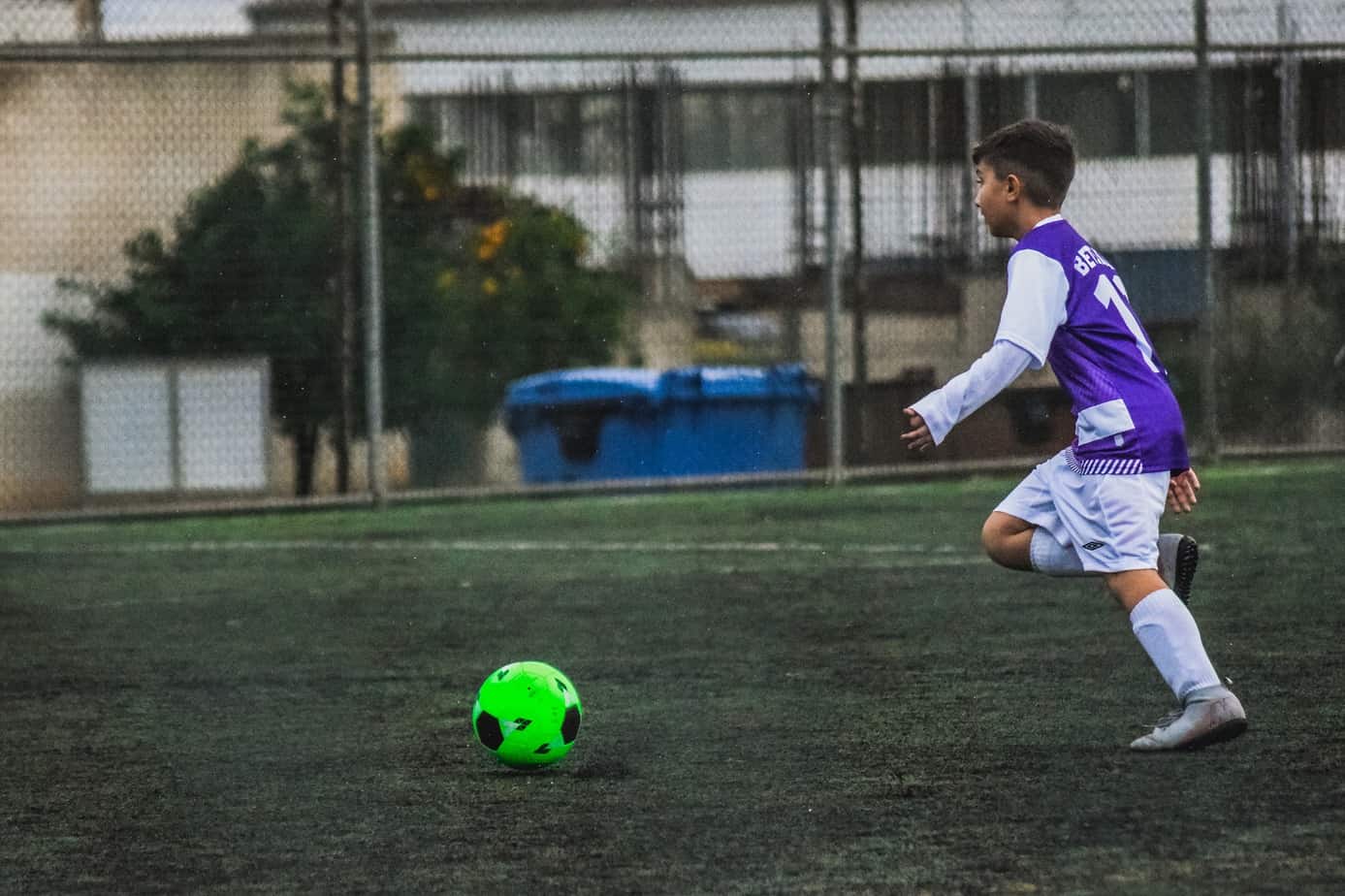Contents
- Background & Objective
- What They Did
- What They Found
- Practical Takeaways
- Reviewer’s Comments
- About the Reviewer
- Comments

Background & Objective
Many soccer-specific movements involve high velocity concentric and eccentric muscular contractions involving the stretch-shortening cycle (SSC). In this regard, plyometric training (PT) is known to improve SSC function and soccer performance.
The main objective of this study was to investigate the effects of multidirectional plyometric training (MPT) on several performance variables related to soccer in young children.
What They Did
The participants were twenty-eight male soccer players from a soccer academy aged 11.6 ± 0.8 yr). These participants were randomly assigned into an experimental group (EP) (n = 14) or a control group (n = 14).
The EP group were introduced to an 8-week MPT programme performed twice a week. The control group maintained their regular training routine. The programme consisted of three exercises per week in a vertical-anterior-posterior plane, vertical-lateral, and vertical-anterior-posteriorlateral plane.
To assess vertical jump height, a squat jump and countermovement jump were used. Agility-based performance was investigated using an agility T test. Finally, the star excursion balance test was used to assess dynamic postural control.
What They Found
The results of this study found that the MPT enhanced three important qualities that are relevant to the performance of young male soccer players. For the squat jump, a significant group x time interaction was observed (p < 0.05). For the countermovement jump and t-test, significant group x time interactions were also found in the EP (p > 0.05). However, the control group showed no significant improvements (p > 0.05).
Finally, dynamic postural control performance improved in seven axes in the dominant and non-dominant leg. Again, no significant results were found in the control group (p > 0.05).
[optin-monster-shortcode id=”jyyw4xzrpuivfz8gggx4″]
Practical Takeaways
- MPT proved to be an effective method of improving jump and change of direction performance. These qualities are essential to develop throughout a season, but should be progressed over time to avoid any overuse injuries. To support this, the attached resource from Michael Beale (see HERE) offers 126 effective warm-ups that are multidirectional in nature. When periodised, these can be highly effective at developing performance characteristics in soccer.
- To assess dynamic postural control, the star excursion test was used. This test is not only effective at assessing balance in both the dominant and non-dominant leg but can be used as a method to track strength, range of motion, proprioceptive control, and limb asymmetry. In the video below by PhysioTutors, some calculations that assess singlelimb function in the vertical-anterior-posterior plane, vertical lateral, and vertical-anterior-posterior-lateral plane can be implemented in practice.
- Multidirectional plyometrics, in particular to the side (lateral) and backwards (posterior) are a relatively advanced plyometric exercise that places high stress on the muscle-tendon system. In-place plyometrics require high levels of coordination and body control, so before advancing to multi-directional plyometrics, I would advise that players follow a protocol similar to the one offered by NASM (see HERE).
Reviewer’s Comments
“The present study was based on a progressive, moderate-intensity exercise programme to minimise the risk of injury. This study is unique in its application of jumping in multiple directions, suggesting that this is not only safe but an effective method of developing athletic performance. In the attached podcast, Lee Taft discusses the role of multidirectional development in athleticism, suggesting some of the ways he incorporates drills which allow “free play”, and then evolves them into more complex and extensive change of direction tasks.
In the absence of growth-related hormones seen in children, the authors suggest that the improvements seen in this study are most likely associated with improved neuromuscular performance. Furthermore, as a result of improved muscle-tendon behaviour in the agonist and antagonist muscles during jumping, improvements in the concentric (squat jump: = + 11.14 %) and plyometric (countermovement jump = + 9.91 %) were seen. However, measuring strength alongside this, with the use of a handheld dynamometer, for example, would have supported this claim. In conclusion, such a program should be appealing to coaches as it requires very little time to complete, whilst showing some impressive results.”
Want to learn more?
Then check these out…
Watch this video
Read this article
Listen to this podcast
The full study can be read here.


